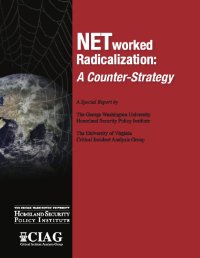By International Crisis Group
Once regarded as a minor hub in Mexico’s criminal economy, Veracruz is now confronting the harrowing truths from over a decade of violence and grand corruption. At least 2,750 people are believed to have disappeared in a state whose former governor is wanted for embezzlement on numerous counts. The murders of seventeen journalists from 2010 onwards are the most notorious examples of a whirlwind of killings that targeted, among others, legal professionals, police officers, potential witnesses to crimes and any civilians who dared check the ambitions of a multitude of criminal organisations and their political accomplices. A new governor from the opposition National Action Party (PAN) has promised to clean out the state and prosecute wrongdoers, fostering hopes that peace can be restored. But as economic turbulence threatens the country, and bankruptcy looms over Veracruz, strong international support will be crucial to bolster initiatives aimed at finding the bodies of the disappeared, investigating past crimes, and transforming the state’s police force and prosecution service. Veracruz is emblematic of the challenges facing the country as a whole. Threats by the new U.S. administration to curb Mexican imports and fortify the border to keep out undocumented immigrants imperils its southern neighbour’s economic prospects. Similarly, President Trump’s predilection for armed force to combat cartels ignores the harm produced by the militarisation of public security as well as its proven ineffectiveness. But Mexican voices demanding a stronger national response are hamstrung by the extreme unpopularity of political leaders and public estrangement from government. Corruption and perceived criminal complicity have undermined the legitimacy of the Mexican government at all levels, especially at the tier of the country’s 31 regional states. Baptised “viceroys” as a result of the extraordinary powers granted them during Mexico’s transition from one-party regime to multiparty democracy, state governors have also become some of the country’s most disreputable public authorities. Since 2010, eleven state governors have come under investigation for corruption. In Veracruz, an alliance between criminal groups and the highest levels of local political power paved the way to an unbridled campaign of violence through the capture of local judicial and security institutions, guaranteeing impunity for both sides. Strengthening institutional probity and capacity in Veracruz, as in the rest of Mexico, will require federal and state levels to deliver on vows to work in partnership to staunch corruption, and on their willingness to abjure short-term political and electoral advantage. With the election of the new governor, Miguel Ángel Yunes Linares, the once hegemonic Institutional Revolutionary Party (PRI) lost power in the state for the first time in over 80 years. But the PRI remains in control at the federal level and has shown wavering commitment to Yunes’ reformist plans, not least because of the importance of securing votes from the region, the country’s third most populous, in the 2018 presidential election. The state’s budgetary crisis and the new governor’s two-year mandate make it highly unlikely that the state government could accomplish sweeping reform to Veracruz’s institutions without sustained federal backing.
Brussels: International Crisis Group, 2017. 41p.





















